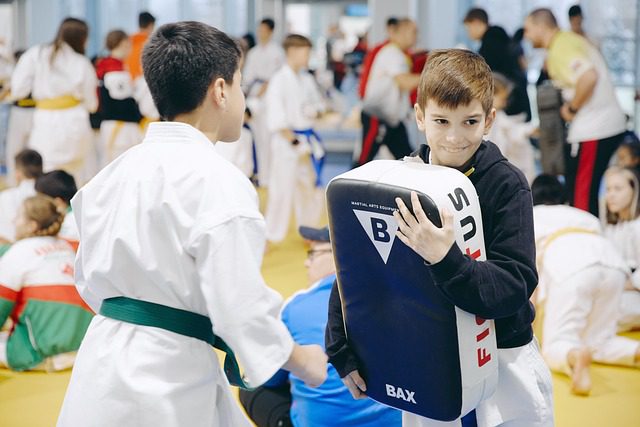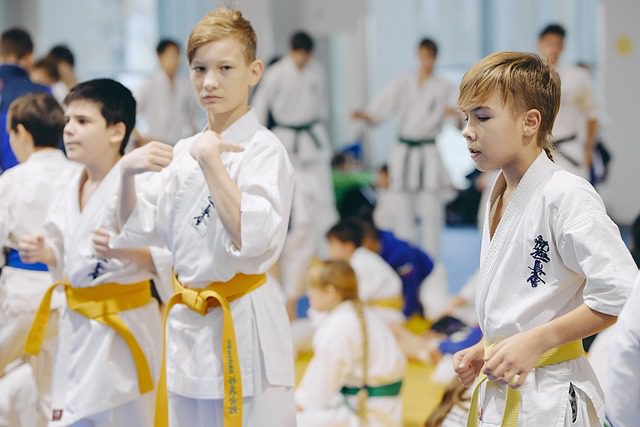The traditional martial art of Muay Thai, sometimes referred to as the “Art of Eight Limbs,” has its roots in Thailand. Its unique style of striking that combines the use of fists, elbows, knees, and shins has become more popular all over the world, not just as a competitive sport but also as a means of self-defense and physical training. Although Muay Thai has many physical and psychological advantages, it’s important to discuss the possibility of harm, particularly with young students of this martial art.
Children learn best when they are engaged in physically and mentally demanding activities because they are inherently energetic and active learners. For youth looking to build strength, agility, and self-confidence, Kids Muay Thai’s disciplined training and correct style may be appealing. Nonetheless, the unique risks connected to kids engaging in this combat sport need to be known by parents, coaches, and practitioners.
Table of Contents
Physical Demands in Kids Muay Thai:
Kids Muay Thai requires a lot of physicality, and it poses a variety of physical challenges that help kids who practice this martial art grow physically as a whole. Children who practice Muay Thai must meet the following physical requirements:
1. Cardiovascular Endurance
Kids Muay Thai training includes intense exercises that need continuous aerobic stamina, like running, pad work, fighting, and skipping. By participating in these exercises, children develop their stamina, strengthening their hearts and increasing their degree of general endurance.
2. Strength and Power
Muay Thai striking methods, such as punches, kicks, knees, and elbows, need strength and power. Kids gain the muscular strength and explosive force necessary for the proficient execution of these techniques through training exercises like bag work, shadowboxing, and strength conditioning drills.
3. Flexibility and Agility
Flexibility is key in Muay Thai to perform clinches, kicks, and evasive moves. Kids engage in stretching exercises to increase their flexibility, and agility drills help them become more capable of changing directions swiftly and efficiently when fighting.
4. Balance and Coordination
In kids Muay Thai, balance, and coordination are very important, especially when performing complex techniques like high kicks or combinations combining many blows. Children’s motor skills and coordination are improved by training regimens that emphasize repetitious approaches and balancing exercises.
5. Mental Toughness and Discipline
Children who practice kids Muay Thai gain focus, discipline, and mental toughness. Because of the rigorous training, they develop mental resilience by learning self-control, tenacity, and the capacity to go beyond their comfort zones.
Physical Risks in Kids Muay Thai
In Kids Muay Thai, children are exposed to different physical risks due to the nature of the sport, which involves strict physical training, striking techniques, and sparring. Here are some specific physical risks that children participating in Muay Thai might face:
1. Traumatic Injuries
Children who practice Muay Thai may sustain acute injuries such as sprains, scrapes, bruises, and abrasions from striking with their fists, elbows, knees, and shins. These injuries may result from unintentional collisions, poor technique execution, or a loss of control during training or sparring sessions.
2. Musculoskeletal Injuries
Children who practice Muay Thai may sustain overuse injuries such as tendonitis, stress fractures, muscle strains, and ligament sprains as a result of the high-impact, repetitive nature of the movements. Their developing bodies may be strained if they punch, kick, and engage in strenuous exercise without proper rest or recuperation periods.
3. Head Injuries
Combat sports raise serious concerns about head trauma. Even while headgear is frequently used during training, there is always a chance of concussions or other head injuries, particularly during sparring sessions where unintentional hits could happen.
4. Joint and Bone Injuries
Children’s bones and joints may be stressed by the powerful hits and kicks used in Muay Thai, which may result in fractures, dislocations, or harm to the growing plates—areas where long bones finish and where developing tissue is located.
5. Overexertion and Exhaustion
Excessive training without adequate rest or water can cause exhaustion, dehydration, and overexertion, which raises the risk of injury because impaired physical abilities and decreased coordination result.
The safety and well-being of children who practice Muay Thai should come first, even with all of the benefits this martial art has to offer. Parents, instructors, and practitioners should be aware of the physical risks involved and take the necessary precautions to reduce them.

Mitigating The Risks In Kids Muay Thai
Mitigating the risks in practicing Kids Muay Thai involves implementing different measures to prioritize safety, minimize potential injuries, and ensure a positive experience. Here are several strategies to mitigate risks in children participating in Muay Thai:
1. Qualified Instructors and Supervision
Enroll kids in respectable Muay Thai clubs or gyms run by licensed teachers with experience instructing young students. Age-appropriate instruction, correct technique, and safety should all be stressed by instructors.
2. Emphasis on Proper Technique
Prioritize teaching kids proper form and technique above using force. Technique execution done correctly lowers the possibility of injury during training and sparring sessions.
3. Appropriate Protective Gear
During training and sparring, make sure they are using the appropriate safety gear, such as headgear, mouthguards, shin guards, gloves, and groin protectors. Gear that fits properly reduces the chance of injury and helps avoid it.
4. Age-Appropriate Training Programs
Programs should be designed with children’s physical and developmental stages in mind. To reduce the danger of overuse injuries, progressively introduce methods and exercises based on their suitability.
5. Create a Positive Training Environment
Encourage a welcoming and upbeat training atmosphere where cooperation, safety, and respect are given top priority. Discourage violent behavior and promote sportsmanship and good competition.
6. Parental Involvement and Consent
Parents should be involved in their children’s instruction. Make sure they are aware of the risks involved in Muay Thai and give their permission for their child to participate in it voluntarily.
Parents, coaches, and instructors can drastically lower the risks involved with kids practicing Muay Thai by putting these precautions into place. A satisfying and injury-free experience in this martial art depends on putting safety first, using the right training methods, and fostering a friendly environment.
Conclusion
In conclusion, even though kids can benefit greatly from Kids Muay Thai in terms of their physical and mental health, it’s important to be aware of the possible hazards of damage related to this martial art. Kids Muay Thai is a dynamic sport that involves striking techniques, sparring, and strict physical training. As a result, there are risks associated with the sport, including traumatic injuries, overuse strains, brain injuries, and tiredness. However, these hazards can be greatly reduced by putting in place suitable supervision, prioritizing technique over power, utilizing the necessary protective gear, and keeping balanced training schedules. Children can benefit from Muay Thai while reducing the risk of injuries by emphasizing safety precautions and establishing a supportive environment, which promotes their physical development and self-discipline.
Featured Image by YasDO from Pixabay




